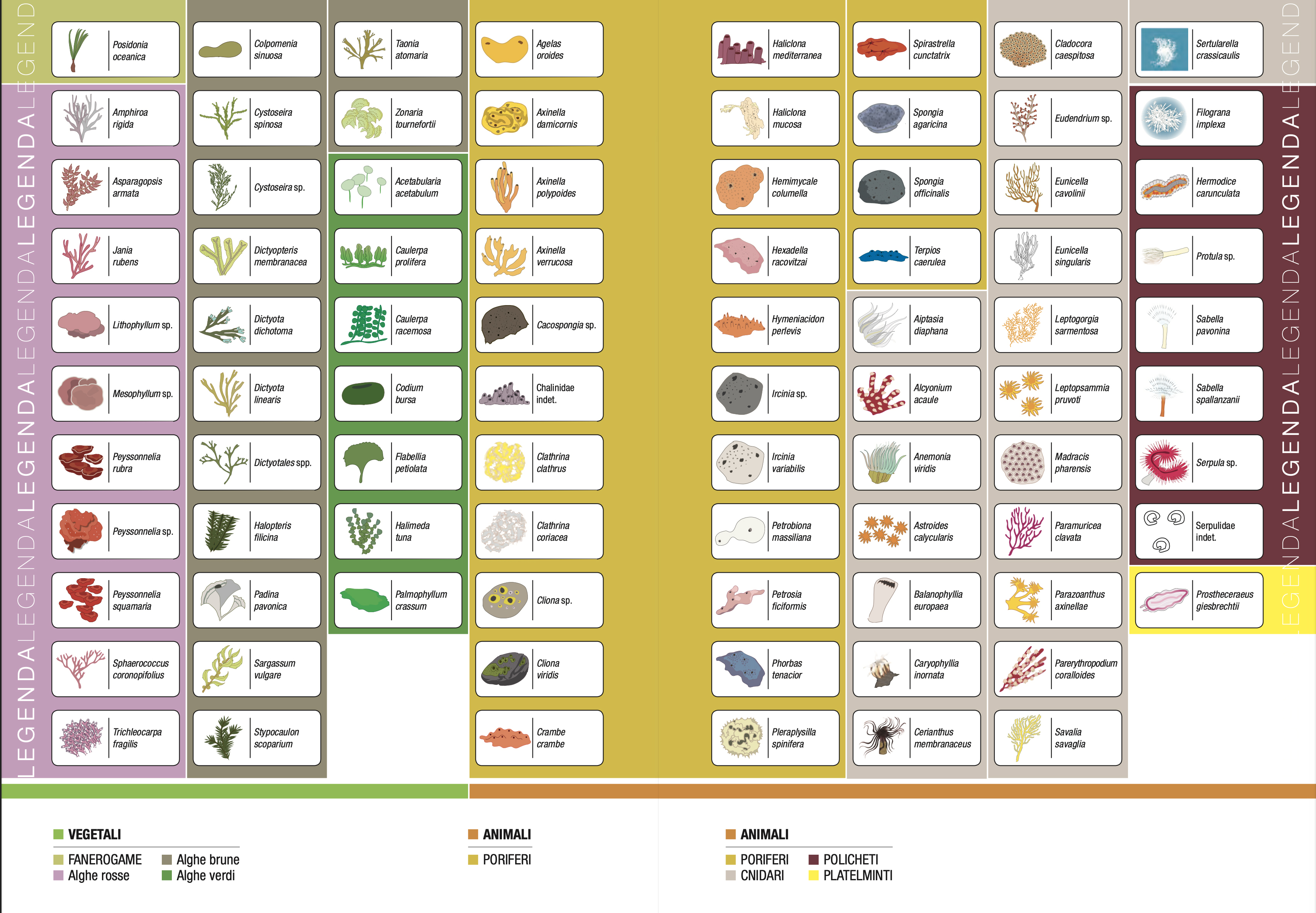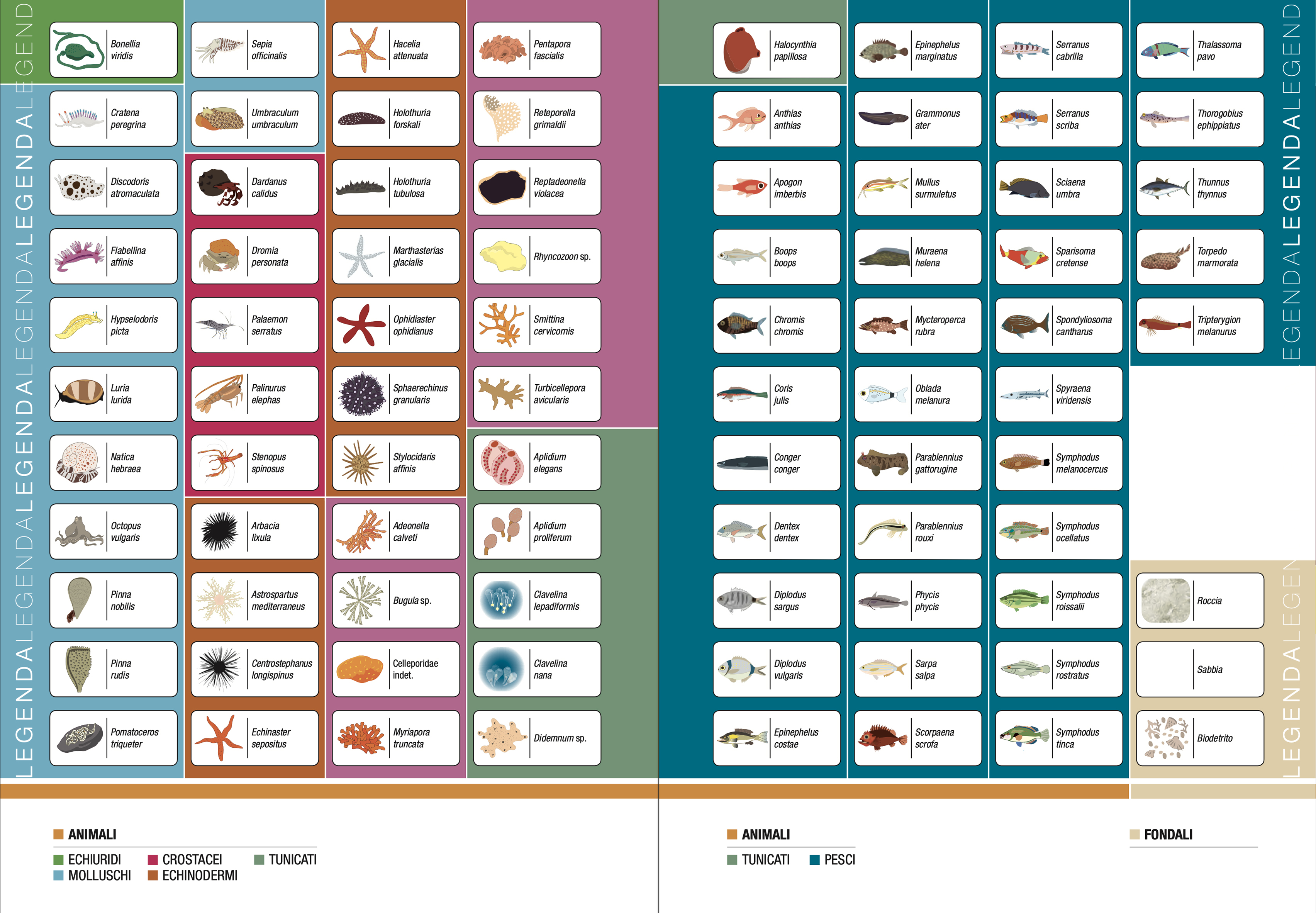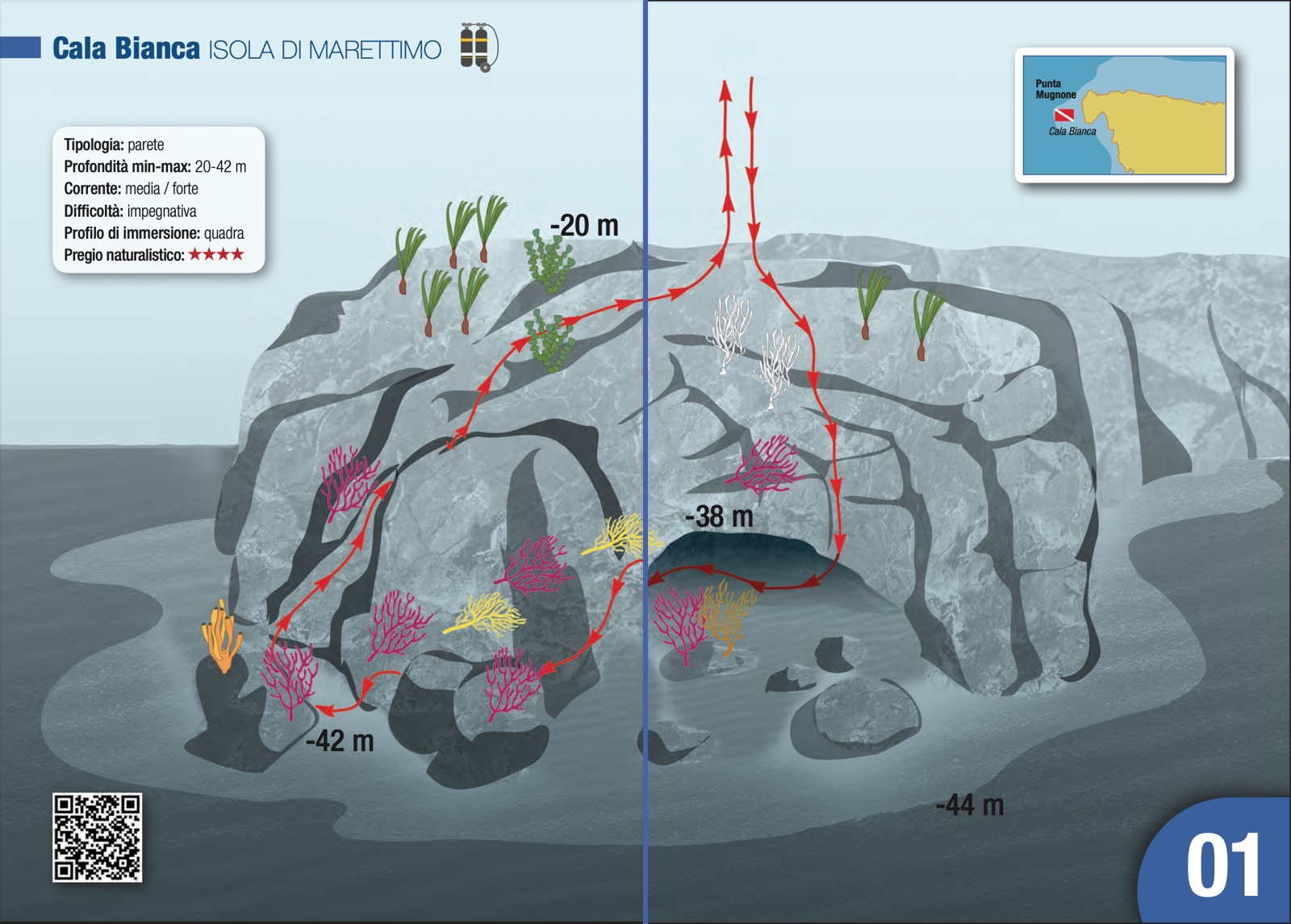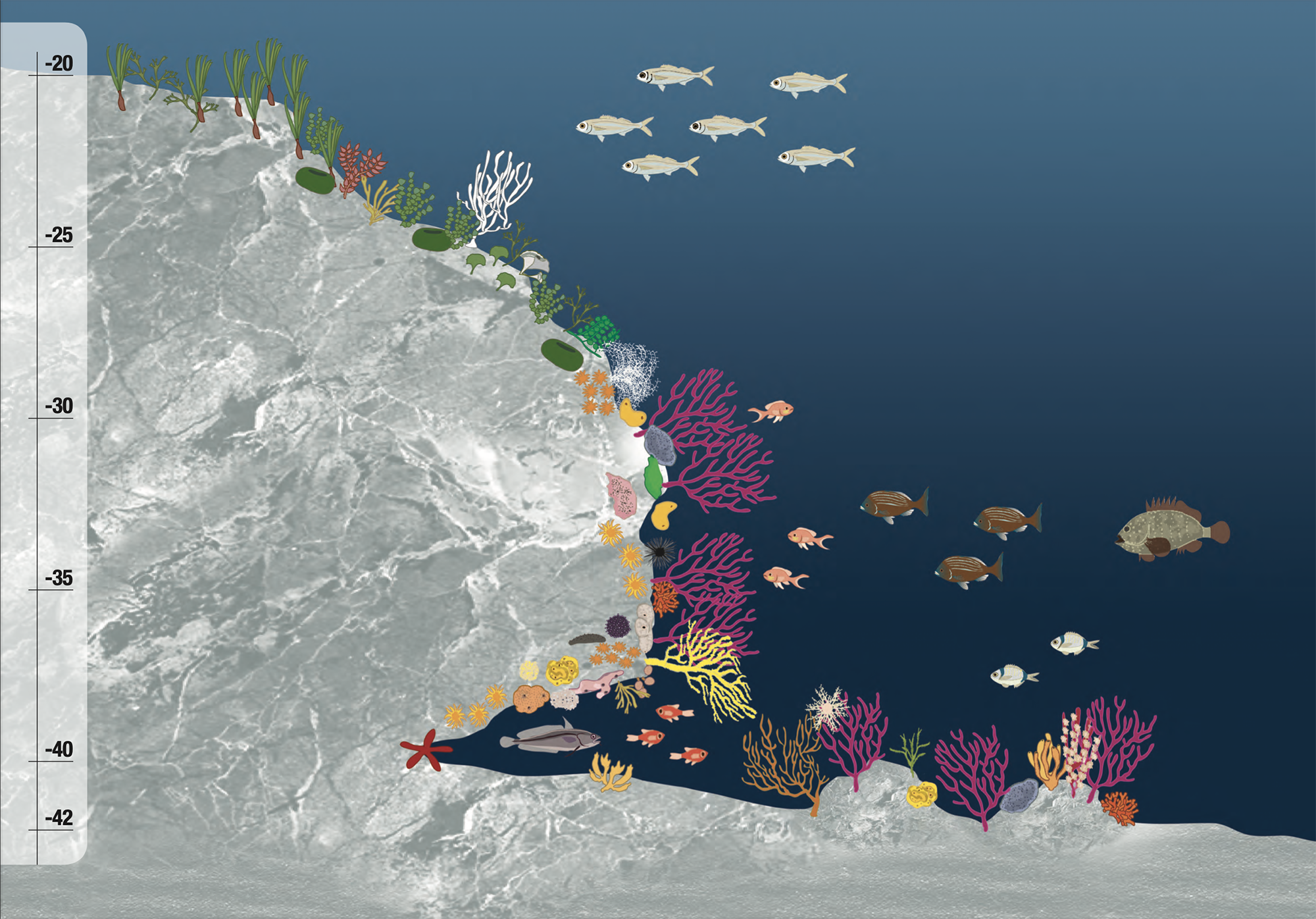Site 1 - Cala Bianca
The spectacular colour and diversity of species encountered at this site well represents some of the biological peculiarities of the Mediterranean Sea. On some occasions, however, the current can be so strong that diving is not possible. The top of the rocky emergence is located at 20 m, where extensions of Posidonia oceanica and seaweed (Dictyotales spp., Codium bursa, Halimeda tuna, Asparagopsis armata) are encountered, above which bogue (Boops boops) swim. At 24 m, the first white gorgonians (Eunicella singularis) are encountered, while fans of the red gorgonian (Paramuricea clavata) make their appearance around 30 m. Along the sub-vertical rock face, colourful colonies of the madrepore Astroides calycularis, pink patches of the sponge Hexadella racovitzai, yellow patches of Agelas oroides, large grey specimens of Spongia agaricina and bright green patches of the algae Palmophyllum crassum stand out. Clouds of red damselfish (Anthias anthias) accompany the descent and specimens of brown grouper (Epinephelus marginatus) hide in burrows. The almost vertical wall continues richly encrusted and colourful up to about 37 m, with yellow sponges Axinella damicornis and colonies of the madrepore Leptopsammia pruvoti alongside A. calycularis. Two large, spectacular branches of false black coral (Savalia savaglia) stand out among the red gorgonians. A deep rift, at about 40 m, offers substrate on the vault to numerous sponges (Clathrina clathrus, Hemimycale columella, A. verrucosa, Haliclona mediterranea, Petrosia ficiformis), bryozoans (Myriapora truncata), madrepores (Leptopsammia pruvoti, A. calycularis), stars (Ophidiaster ophidianus). In the interior, there are clouds of red damselfish (Anthias anthias) and musdea (Phycis phycis) can be found at the bottom. At 41 m, the collapse rocks on the biodetritic bottom are home to the gorgonia E. cavolinii and P. clavata, on whose branches small specimens of the beautiful gorgonian star (Astrospartus mediterraneus) can be seen. Still on the rocks, a few specimens of the large 'elephant's ear' sponge (Spongia agaricina) and the branching sponge (A. polypoides) can be observed. Proceeding upwards, along the wall, it is not unusual to encounter shoals of damselfish (Chromis chromis), banded seabream (Diplodus vulgaris) and the burbot (Spondyliosoma cantharus).
Legend:


-
Information
-
Contacts

